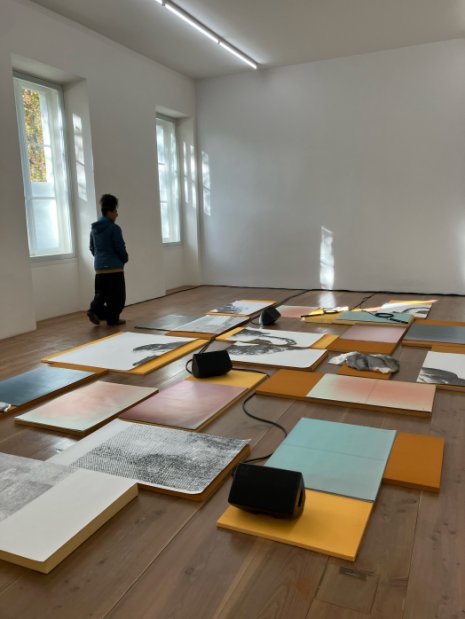In Marina's Words...
In my work I pose questions that originate in the body: questions about the shape and sociality of perception and its sensual transformation (into hearing, sight, touch), often expressed through the staging of music or sound. I think of bodies as sensoria, amalgams of social, libidinal, and inherited possibility. My own sensorium is my primary site of research.
I try to listen to sites by listening to my voice in them, observing my own and others’ bodies at rest and in action, imagining modes of entanglement that are prosocial, tuned to outlying frequencies and sensitive to difference.
My main interest is the invention and testing of new forms: I am only satisfied with an idea if it pushes at the limits of known forms, engenders a new strategy for posing a question, and engages with the tangled histories of its medium. For instance, I find it unproductive to disentangle sound and music: I understand the apprehension of both to be social practices articulated through the perceptual capacities of the body. I work with performance, installation, electronic media, experimental forms of musical notation and printing, sculpture, photography, and improvisation.
I came of age in the 1990s in a period of foment around questions of identity and genre, not dissimilar to today. I felt that I was an outlier in my community—post-art school Los Angeles—as, first of all, a woman making experimental music, but also as a composer suspicious of the concert stage, and importantly, a maker and crafter of sounds, situations, images and objects in an environment where the readymade, the sample, and “post- production” were widely accepted signifiers of the contemporary. I was interested in invention, not just re- invention. My early works were polemical, manifesto-like—especially the Sheer Frost Orchestra (first performance 1993 at CalArts), a temporary “orchestra” of electric guitarists that was all female, proudly amateur, and staged to force an aggressive conversation about power and the female body. The orchestra refused the satisfaction and erotics of touch, especially in the gendered fashion of the electric guitar, and left the instruments lying on the ground; we played them tapping and stroking them with nail polish bottles.
Many of the lasting strands of investigation in my work originate with this early piece, which has continued to be performed to this day. (A 30th-anniversary event takes place in November.)
As I’ve made more complex computational structures behind my installations, I’ve gravitated toward recursive or circular forms that self-propagate or feedback. Computer music, gaming and surveillance are ongoing interests, even as the works I make are critical of power, centralized authority, and the panopticon within which we are meant both to live and socialize.
My recent works have been loose and joyful with materials. I’ve discovered drawing and printing. I work with images to some extent as a composer, that is, with a sense that we mostly deal with the traces of things, the aftersound, after-impression, the distortion. The works on paper that are prevalent in my exhibitions since 2021 are monoprints achieved with a solvent. The act of leaching ink out of an image to transfer it to another surface has enormous resonance for me— I am following this thread where it takes me.
Alongside all the new work, I also have some works that are frequently mounted, amongst them, Teenage Lontano and Deathstar. Teenage Lontano, originally 2008, was my “cover version” for teenagers of a canonical work of musical modernism, György Ligeti’s Lontano. Like Sheer Frost, it is location-specific—always mounted with performers from the place where it is being staged. I directed a new staging as recently as March 2023.
In the case of the Deathstar project, I’ve considered the work finished several times, only to be undone by the possibility of yet a new instantiation. Most recently — in October 2023 — I mounted a 48-hour performance in Switzerland with an audience that slept, woke, ate and listened together over a long cold night.
I have a lengthy history as a performer/conjurer of sounds, improvised and otherwise, especially using turntables and dub plates, as a collaborator with choreographers and other musicians in a wide variety of contexts, from club to stage, and as a teacher.
I am aware that the nature of my work makes me hors category. I made peace with the specific nature of my hybridity as it is simply who I am.
That said, I have approached the gradual expansion or shift of material registers in my work with extreme care and deliberation. The projects that I've shared are all deeply felt, complexly conjured attempts to understand the nature of art, the possibilities of experience, and the limits of communication.







